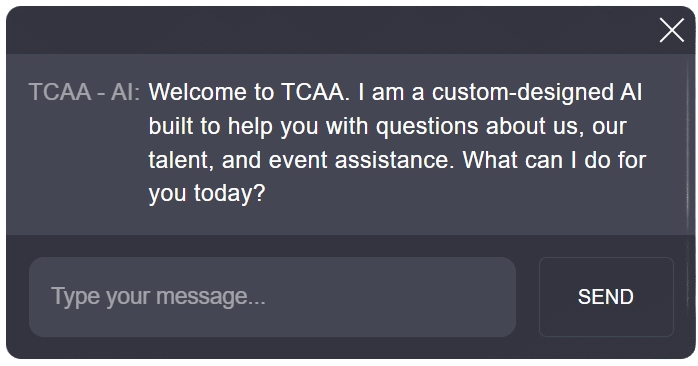In the digital age of 2024, cybersecurity stands as a bulwark between our personal information and an army of cybercriminals. Every day, hackers devise innovative methods to infiltrate systems, holding data hostage or stealing it outright. High-profile incidents, like the MGM Resorts breach earlier this year, serve as sobering reminders that no one is immune from cyber threats. The math is simple: the stakes are high, and the need for effective cybersecurity practices has never been more pressing. Organizations must wake up and recognize that cybersecurity is not an afterthought—it’s vital.

1. The Imperative of Cybersecurity in 2024
As we thrust ourselves into 2024, we see the landscape of cyber threats morphing in unpredictable ways. It’s no longer just about ransomware attacks or phishing emails; this year has seen an explosion of sophisticated tactics that can breach even the most fortified digital walls. Studies indicate that businesses can face degradation in customer trust and financial loss following a breach; this makes it crucial for companies to bolster their defense strategies. Cybersecurity not only protects sensitive information but also sustains the very foundation of our digital economy.
When your cybersecurity practices are up to par, you’re not just creating protective measures; you’re fostering trust within your consumer base. Cybersecurity isn’t merely a tech issue; it’s a business imperative. So let’s chart a course over the tumultuous waters of data protection, starting with effective cybersecurity practices.

2. Top 7 Cybersecurity Practices to Safeguard Your Data
Here are seven vital cybersecurity practices that can help undergird your organization’s defenses:
1. Employ Multi-Factor Authentication (MFA)
Think of Multi-Factor Authentication as a security guard standing watch over your digital assets. Tech titans like Google and Microsoft have adopted MFA to mighty effect. Google’s innovative use of security keys has slashed the risk of unauthorized access. When someone tries to log in, they’re met with an additional hurdle that deters many cyber invaders. Given that over 85% of hacks occur through poor password management, opting for MFA is a no-brainer.
2. Regularly Update Software and Systems
Staying current with software updates is essential. Those pesky reminders you often dismiss? They hold the key to fortifying your system against vulnerabilities. Cybersecurity firm Symantec underscores that many breaches exploit these outdated systems. Whenever your devices prompt for an update, think of it as a lifeline; follow it to minimize your exposure to threats.
3. Utilize Strong, Unique Passwords for Every Account
Raise your hand if you’ve ever used the same password across multiple sites. You’re not alone, but it’s time to change that tune! Password managers like LastPass or 1Password can assist you in crafting strong, distinct passwords, reducing the chances of falling victim to password reuse. Did you know that a staggering 80% of breaches stem from weak passwords? Remember, your data’s first line of defense is a solid password.
4. Implement Network Security Tools
Firewalls and intrusion detection systems are your front-line soldiers in the fight against cyber invasions. Companies such as Cisco provide tools that actively monitor network traffic and alert you to potential threats. By adopting these technologies, you’re paving the way for a safer cyber environment.
5. Conduct Regular Security Audits
Auditing your organization’s cybersecurity is akin to getting a health check-up; it helps identify vulnerabilities and assess the strength of your defenses. Companies like Deloitte recommend regular security assessments to ensure you’re not leaving gaping holes in your armor. This diligent monitoring can save your organization from costly breaches.
6. Educate Employees on Cybersecurity Practices
Your employees are often the first line of defense against cyber threats. Security awareness training programs, like KnowBe4, are leading the charge in educating teams about the latest phishing scams and security best practices. An empowered workforce acts as a formidable barrier against potential attacks.
7. Maintain Data Backups
Data loss following a cyberattack can be catastrophic. By regularly backing up your information, you can recover swiftly after a ransomware incident. Utilizing cloud services like Dropbox or Google Drive not only simplifies this process but adds an extra layer of cybersecurity.

3. Understanding the Role of Cryptocurrency in Cybersecurity
Welcome to the age of cryptocurrency! It’s not just a financial oddity; it plays a significant role in the cybersecurity landscape. While it enhances privacy for transactions, it also introduces new digital risks that users need to navigate carefully. Understanding what cryptocurrency is and how it operates is paramount for anyone engaged with digital assets.
What is Cryptocurrency?
In simple terms, cryptocurrency is a digital currency secured by cryptography, making it almost impossible to counterfeit. Bitcoin, the granddaddy of all cryptocurrencies, has been making headlines since 2009. Its decentralized nature intrigues many, including cybercriminals, so secure storage is essential. Whether you’re investing or just trading, knowing how to protect your assets is key.

4. The Asynchronous Connection between Cybersecurity and Cryptocurrency
The interplay between cybersecurity and cryptocurrency often draws fascination, mainly around transaction safety. Asynchronous cryptography, commonly used in blockchain technology, enhances security levels by ensuring data remains unaltered during transactions. With this technology, cryptocurrency wallets can affordly safeguard against unauthorized access—it’s not just a theoretical concern; it’s a practical necessity.

5. Innovative Security Measures: The Exploratorium of Data Protection
Let’s explore the innovative tools in the cybersecurity landscape, like machine learning algorithms used for real-time monitoring. Companies like Darktrace utilize AI to observe user behavior and detect anomalies as they happen. This proactive approach isn’t just cool tech—it’s a game-changer, allowing companies to neutralize threats before they escalate into crises.
6. Leveraging Data Visualization: The Role of Histogram Analysis
In cybersecurity, data visualization is not just a buzzword; it’s a vital tool. Histograms and other visual tools help analysis of user access patterns. When a cybersecurity team can see which activities are normal and which are out of the ordinary, they can act fast to stub potential threats while they’re still small. It’s all about making the complex data readable and actionable, improving both detection capabilities and response times.
7. Bridging the Gap: Cross-Disciplinary Approaches
Interestingly, roles in cybersecurity are crossing traditional boundaries. For instance, professionals like phlebotomists, typically associated with healthcare, are now being trained in cybersecurity principles. This unique blend of skills ensures better data management in various sectors, leading to more secure systems across the board.
Innovative Wrap-Up
As we peel back the layers of 2024, understanding the secrets behind cybersecurity is paramount. Both organizations and individuals must adopt a proactive approach, employing modern technologies and consistent education to fend off cyber threats. With the intertwining complexities of cyberattacks and the rising prominence of cryptocurrency, safeguarding your digital existence is more than a luxury—it’s a crucial necessity.
In nurturing these established strategies and innovations, we can collectively promote a secure digital future. Embrace this journey toward a fortified cyber environment where we not only protect our data today but also ensure a stable landscape for tomorrow.
Cybersecurity: Intriguing Facts and Fun Trivia
Surprising Origins
Did you know the concept of cybersecurity goes back to the 1970s? In the early days of computing, the focus was primarily on sharing information among researchers, but as computers became more interconnected, the need for protection grew. Fascinatingly, the first computer virus, “Creeper,” was created in 1971, demonstrating how quickly cybersecurity became essential. And speaking of evolving technologies, did you know that even the creativity of anime, like in Girls Und panzer das finale part 4, can show depictions of cyber strategies and defense? It’s a quirky example of how tech and pop culture can intersect.
The Numbers Game
Statistics around cybersecurity are startling. For instance, there’s been a staggering increase in cybercrime, costing the world trillions of dollars annually. To put this in perspective, securing data to avoid breaches is becoming as critical as hiring a good pharmacist when you’re feeling under the weather—trust me, you want someone reliable! Furthermore, with the rise of remote work, corporate networks are more vulnerable, showing just how essential it is for businesses to stay ahead in such a fast-paced digital atmosphere.
Proactive Measures
A survey concluded that nearly 60% of small businesses go out of business within six months of a cyber attack. By seeking guidance from experts or engaging in cybersecurity training sessions, organizations can significantly elevate their defenses. It’s akin to the way real estate probate specialists help navigate legal complexities in property management—having a guide makes a world of difference. Always remember, keeping your guards up is not just a defensive move but an offensive strategy in a competitive landscape, much like the savvy moves in venture capital investing.
As the tech scene continues to evolve, educational institutions like Caltech are innovating programs to prepare the next generation of cybersecurity professionals. Engaging with current real estate Questions also seems to be an emerging trend, emphasizing the broadening scope of data protection. So, whether you’re a business or an individual, getting equipped with a solid cybersecurity plan is a no-brainer in this modern age!

What exactly does cybersecurity do?
Cybersecurity protects systems, networks, and programs from digital attacks aimed at stealing, changing, or destroying sensitive information. It also works to prevent financial losses from ransomware and to keep business processes running smoothly.
Is cyber security high paying?
Yes, cybersecurity can be high-paying, with entry-level positions starting around $50,000 and more experienced professionals earning six figures as they build their careers.
Is cyber security very hard?
While cybersecurity has its complexities, it can be mastered by those who are dedicated and willing to learn. Many find it to be a rewarding field that offers great long-term career potential.
What are the five types of cyber security?
There are six types of cybersecurity measures: network security, application security, information security, cloud security, Internet of Things (IoT) security, and identity and access management, all designed to safeguard against cyber threats.
Is cybersecurity a good career?
Cybersecurity is indeed a good career choice, especially as the demand for professionals in this field continues to grow with increasing cyber threats and challenges.
Is cyber security a remote job?
Yes, many cybersecurity jobs offer the flexibility to work remotely, allowing you to manage your work from anywhere with an internet connection.
Do I need a degree for cyber security?
While having a degree can help you get an edge in cybersecurity, it’s not strictly necessary. Many successful professionals have entered the field through self-study, certifications, and hands-on experience.
Which IT job is the highest paid?
The highest-paid IT jobs can vary, but often those in cybersecurity leadership roles, like Chief Information Security Officers (CISOs), command top salaries in the industry.
Can you make $500,000 in cybersecurity?
Yes, some can make $500,000 in cybersecurity, especially in senior or specialized roles, but those positions often require years of experience and a proven track record.
Is cybersecurity a lot of math?
Cybersecurity doesn’t require a ton of math, but some basic understanding of statistics and logic can be helpful depending on the area you focus on.
Can I learn cyber security in 3 months?
It’s possible to learn the basics of cybersecurity in three months, especially if you’re dedicated and utilize efficient resources like online courses or boot camps.
Is the cybersecurity exam hard?
The difficulty of the cybersecurity exam can vary based on the specific certification, but many find it challenging due to the technical knowledge required.
What are the 3 C’s of cyber security?
The three C’s of cybersecurity are confidentiality, integrity, and availability, which describe key principles for protecting information.
Does cybersecurity require coding?
While some roles in cybersecurity may involve coding, it’s not a requirement for all positions. Many jobs focus more on policy, strategy, and system management.
What are the 4 P’s of cyber security?
The four P’s of cybersecurity are prevention, detection, response, and recovery. These guide how organizations approach securing their information.
What is the main task of cyber security?
The main task of cybersecurity is to protect systems and data from unauthorized access and cyber threats while ensuring the integrity and availability of information.
What does cybersecurity do all day?
In cybersecurity, professionals engage in monitoring systems, responding to incidents, implementing security measures, and continuously assessing risks to keep information secure.
What is the main purpose of cyber security?
The main purpose of cybersecurity is to safeguard sensitive information from cyber threats and ensure that systems function reliably and securely for users and organizations alike.


















